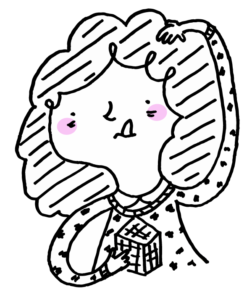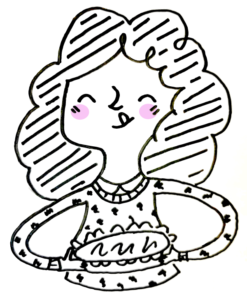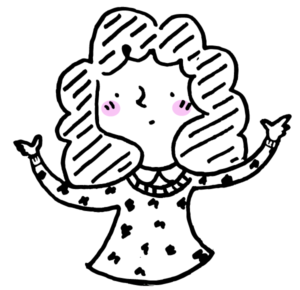Conce seeing an app can be a hell of a thing brain teaser. We don't know which method to use, which team to recruit, which users to mobilize. Well, I had an “ideal” project and, as I'm super generous :-), I'll tell you!
seeing an app can be a hell of a thing brain teaser. We don't know which method to use, which team to recruit, which users to mobilize. Well, I had an “ideal” project and, as I'm super generous :-), I'll tell you!
The decor
For neophytes (note those who do not know us), the principle at UX Republic is to work with our customers in close collaboration with them to design applications, websites… What do I know…
Me !? I am UX Activist (Picture queen, UI, DA coughed), but I'm also UX-Evangelist a little in my heart (tmtc #uiux…).
So here I am at home n client who wants to make an application. It's a bit of a huge chocolate pie for a designer this project, because we have a device and we know which one: ipad mini, the same for everyone. And what else ? Ah yes, we know our users, there aren't too many of them and many are accessible! Too easy ? Not that much…
n client who wants to make an application. It's a bit of a huge chocolate pie for a designer this project, because we have a device and we know which one: ipad mini, the same for everyone. And what else ? Ah yes, we know our users, there aren't too many of them and many are accessible! Too easy ? Not that much…
Because for the client I'm talking about Agility and UX it's rather new and here we start on Lean and scrum.
So how did you do? (Sorry to speculate on your impatience, it makes me happy to make questionable assumptions… [and happiness at work is good for productivity, it's proven!]).
To better set the scene, in our production team there were:
- A PM (Project Manager)
- A PPO (Proxy Product Owner for those who have time to waste) / Business Analyst / UX Designer (we'll come back to this) / Application Designer (each client => a new job name)
- A team of developers
- 1,5 dev back (no we didn't mistreat anyone)
- 1 iOS / UX Designer dev (we will also come back to this)
- Un UI / UX (me :-))
On the user side:
- Un Power User (which they call PO at my client or Business Champion)
- 5 main users
- About fifty world wide users
Why did it work?
In my opinion, there were several key factors (some intersect, so sometimes you might think I'm rambling…):
 Linvolvement of team members
Linvolvement of team members
their proximity and their regular exchanges.- Le compliance with the Scrum framework
More particularly the writing of good User Stories and respect for rituals: daily scrum meeting et retrospective in particular in order to communicate well (see above) and to identify problems as quickly as possible. - The definition of a realistic scope.
We can not in 6 months put all the features of the earth and its surroundings in an application, please ACCEPT IT !It's like going to the bakery with 2 euros and wanting to leave with all the pastries and other delicacies in the window... They won't be given to you (unless you have a weapon of mass destruction, but that's another problem).
- Le sharing the same vision !
The same desire to make a quality product (and we agreed that nothing should remain on the side of the road, neither the understanding of the need, nor the design, nor the code…), finally nothing except superfluous functionalities (above, I warned you). - Le skill sharing...
The notion of “UX” was shared by several members of the team, in any case we were all convinced that guaranteeing a good user experience was the number 1 focus of the application.Yes, ladies and gentlemen, we are not making an application to gargle on it but for a group of users who really need it to do their daily tasks. And who will looooove you if you make their daily life sweeter… (yes yes I love the Slack product team, especially when I can randomly generate a #BonheurDeMaJournée gif).
- A pragmatic approach.
The people in charge of the “validation” process (decision-making) were very attentive to everyone's “opinions” and always chose the good rather than the best (the best is the enemy of the good…).
But here we are only talking about people… where are the skills? You can well imagine that the team was made up of competent people who did their job well "technically", but I want to insist on the fact that the motivation, passion, communication of the team and of the various “stakeholders” are extremely determining factors in the success of a project!
How does this concern you?
Well I can't recommend you enough to communicate, it's tiring yes, always easier to grumble than to be told that you're doing something wrong… BUT you improve by accepting that sometimes you're wrong (yes it's hard!).
It is also interesting to educate your employees to UX, Agile, lean methods...  Do not be afraid to share, to give knowledge, if your colleagues are more competent, they are certainly more threatening and will tell you even more when you are wrong. BUT your collaboration will be emulated (I insist I know).
Do not be afraid to share, to give knowledge, if your colleagues are more competent, they are certainly more threatening and will tell you even more when you are wrong. BUT your collaboration will be emulated (I insist I know).
Wow did you read it all? I'm flattered! I wish you such great projects and maybe see you soon at a Meetup !? <3
Anne Pedro, UX Activist @UXRepublic
UX/UI ECO-DESIGN # Paris
SMILE Paris
163 quay of Doctor Dervaux 92600 Asnières-sur-Seine
DESIGN THINKING: CREATING INNOVATION # Belgium
UX-REPUBLIC Belgium
12 avenue de Broqueville - 1150 Woluwe-Saint-Pierre
MANAGING AND MEASURING UX # Paris
SMILE Paris
163 quay of Doctor Dervaux 92600 Asnières-sur-Seine
DESIGN SPRINT: INITIATION & FACILITATION # Paris
SMILE Paris
163 quay of Doctor Dervaux 92600 Asnières-sur-Seine
UX-DESIGN: THE FUNDAMENTALS # Belgium
UX-REPUBLIC Belgium
12 avenue de Broqueville - 1150 Woluwe-Saint-Pierre
GOOGLE ANALYTICS 4 #Paris
SMILE Paris
163 quay of Doctor Dervaux 92600 Asnières-sur-Seine
ACCESSIBLE UX/UI DESIGN # Belgium
UX-REPUBLIC Belgium
12 avenue de Broqueville - 1150 Woluwe-Saint-Pierre
EXPERIENCE MAPPING # Paris
SMILE Paris
163 quay of Doctor Dervaux 92600 Asnières-sur-Seine












